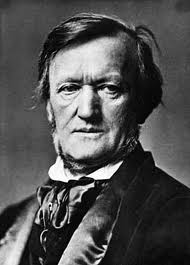One cannot be neutral with Wagner. He provokes both unreserved praise and passionate devotion, and severe condemnation. The piety of ‘Condemn the man, not the music’ founders when it comes to the monumental scope of his mature works and the monstrosity of his personality and anti-Semitism. Debates about the extent to which anti-Semitism pervades his works, how deeply inscribed into the artistic texture of the works, grows voluminous. Each time his works are performed, the debate rages once more: Is Wagner Bad for Us?
This is the fascinating title of Nicholas Spice’s talk where he tackles this question. Wagner’s music and its ability to both embrace and repel a listener, is what gives his music both its power and its uneasiness. Take Tristan and Isolde, what many consider Wagner’s most supreme achievement. Spice points out how the famous Prelude avoids final cadences that one finds in most tonal music. This avoidance holds “the listener in a state of unrelieved alertness,” and that the opening 17 bars lead to an “interrupted cadence that gently forbids us to leave the musical line.” This tension is embodied in the story of Tristan and Isolde themselves; their illicit love played out in the second act where they long for the night to continue so their lovemaking will not end. Daylight will bring about the end of their love. The only thing in their fierce delirium that will sustain their love is death. No wonder that many early listeners found this opera unsettling, even some to declare it degenerate and unhealthy. Those of weak nerves were told to avoid this opera. No friend of Wagner, Nietzsche complained of the pernicious nature to the nerves of Wagner’s music and how it attracted the weak and exhausted.
This tension, as well as Wagner’s ability to organize and composes large-scale works that combine in ways still unsurpassed of music and drama that moved simultaneously, is what makes his music so powerful. The problem comes when the music becomes tied to Wagner’s notorious anti-Semitism and reactionary politics. Adorno’s ‘In Search of Wagner’ makes the argument that Wagner’s betrayal of the revolutionary spirit of the 1840s, of his dismissal of bourgeois politics and his adoption of biological anti-Semitism in his later writings on art and music is embedded in the very fabric of Wagner’s operas.
The troubling paradox is these same tensions and his musical genius also point to a more politically and philosophically positive outlook, side-by-side with Wagner’s gross politics and anti-Semitism. Zizek, a passionate Wagnerite, has written several times on the emancipatory kernel in Wagner’s work.
Parsifal with its declamation “Enthuellt den Graal!” is an announcement of a new social order, one where the Grail is to be revealed at all times and not as an object for a select, closed community and order. “As to the revolutionary consequences of this change, recall the fate of the Master figure in the triad Tristan-Meistersinger-Parsifal (King Marke, Hans Sachs, Amfortas): in the first two works, the Master survives as a saddened melancholic figure; in the third he is DEPOSED and dies.”
Even the ending of the immense Ring cycle can be seen not as a loss but as something necessary, where the world of the gods now corrupted by avarice and materiality, falling into what Marx would call commodity fetishism with the taking of the Rheingold, must come to an end. Man is now free, standing before the spectacle, to forge a new world. Even the elements singled out as showing Wagner’s anti-Semitism (Alberich, Mime, Hagen as figures of the Jews who bring lust for power and corruption to the universe) are more complex, embodying the social and political antagonisms that existed in the society Wagner lived within: “An appropriate reading of Wagner should take this fact into account and not merely “decode” Alberich as a Jew, but also ask the question: how does Wagner’s encoding refer to the “original” social antagonism of which the (anti-Semitic figure of the) “Jew” itself is already a cypher?”
Zizek does not downplay Wagner’s anti-Semitism or the reactionary and disgraceful aspects of his politics and person. He does not indulge in that typical liberal compromise of defending the music and making Wagner’s anti-Semitism some private quirk; or worse, as some have done, seize on some bit of kindness to say, “See, he was not all bad. . . etc.”; nor does he reduced Wagner’s works to mere proto-fascist pamphlets, so they can be safely dismissed in a kind of morally superior waving of the hand. This is sometime the case with other critics of Wagner, as if his work is simply the Horst-Wessel-Lied on a larger scale.
To approach Wagner, one must take the monstrous with the sublime. To fully appreciate and understand Wagner’s music, to truly embrace it, one has to come in contact with that which makes it troubling in order to find its revolutionary core. One can’t detour around either or pretend they are not there.


